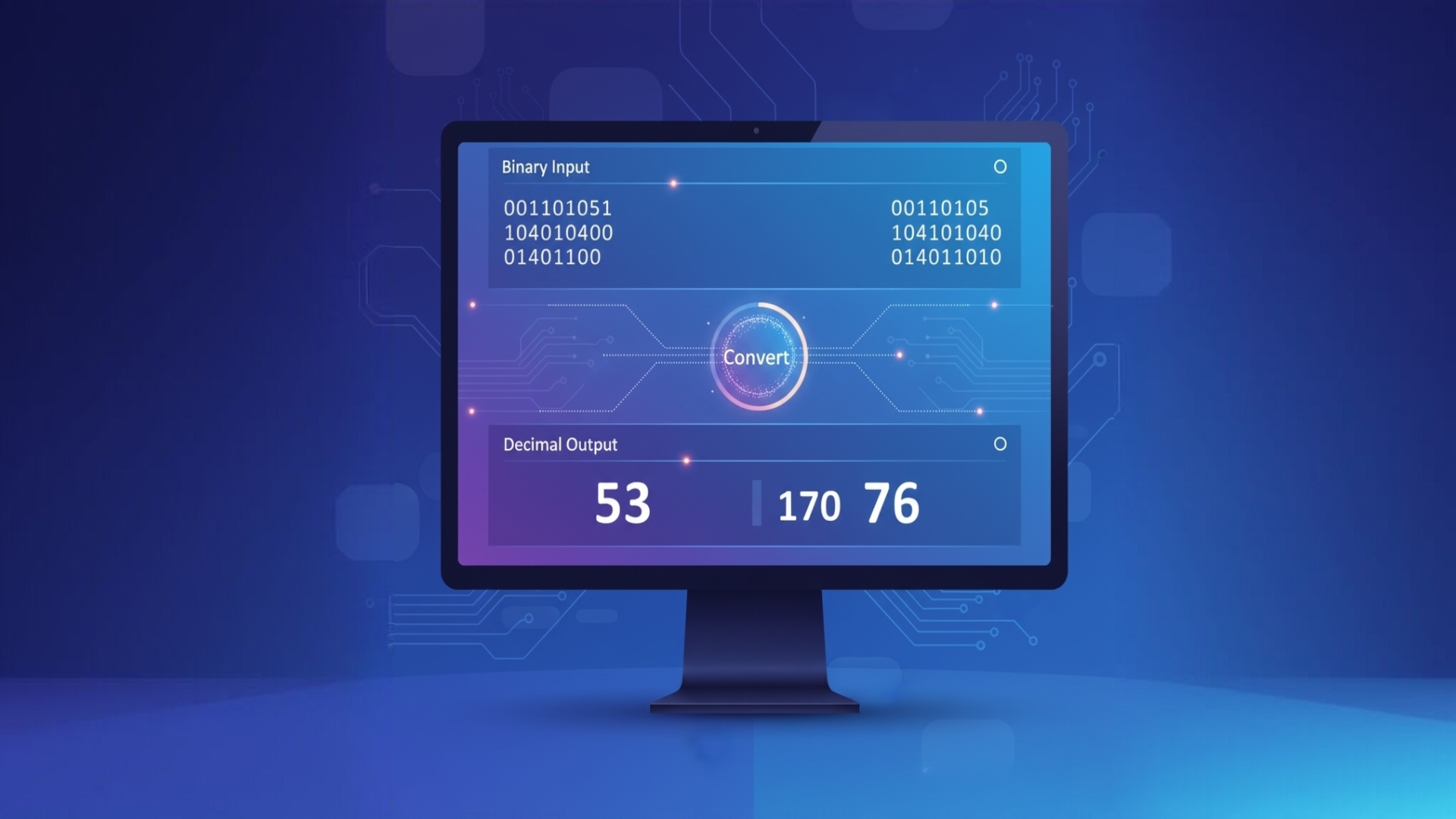Binary Converter: How It Works and Its Importance in Computing
A Binary converter is an essential tool in computing that allows users to convert numbers between binary and other number systems, such as decimal or hexadecimal. Binary, consisting of only 0s and 1s, is the foundation of all digital systems, and converting numbers correctly is crucial for programming, electronics, and data processing.
What is a Binary Converter?
A Binary converter is a device or software tool that transforms numbers from one numeric system to another. Most commonly, it converts decimal numbers to binary and vice versa. This process is essential because computers operate using binary code, representing electrical states as 0s and 1s.
Why Binary Conversion is Important
Binary conversion is important because all computer data, from text to images and videos, is ultimately stored and processed in binary. Without the ability to convert numbers between binary and decimal, humans would find it difficult to interact with computers, write code, or troubleshoot digital systems.
How Binary Conversion Works
Binary conversion works by expressing a number in powers of two. Each digit in a binary number represents an increasing power of 2, starting from the rightmost digit. For example, the binary number 1011 represents the decimal number 11 because 1×2³ + 0×2² + 1×2¹ + 1×2⁰ = 8 + 0 + 2 + 1 = 11.
Decimal to Binary Conversion
To convert a decimal number to binary, divide the number by 2 repeatedly and record the remainders. Then, read the remainders in reverse order. For instance, converting decimal 13 to binary:
- 13 ÷ 2 = 6 remainder 1
- 6 ÷ 2 = 3 remainder 0
- 3 ÷ 2 = 1 remainder 1
- 1 ÷ 2 = 0 remainder 1
Reading remainders from bottom to top: 1101. So, decimal 13 equals binary 1101.
Binary to Decimal Conversion
To convert a binary number to decimal, multiply each binary digit by 2 raised to its position index, starting from 0 on the right. Then sum the results. For example, binary 1010:
(1×2³) + (0×2²) + (1×2¹) + (0×2⁰) = 8 + 0 + 2 + 0 = 10
Applications of Binary Converter
Binary converters have wide-ranging applications in computing and digital electronics. Some common uses include:
- Programming: Converting numbers is essential in low-level programming and debugging.
- Digital Electronics: Binary is used to represent electrical states in circuits.
- Data Encoding: Binary converters help encode information for storage and transmission.
- Education: Learning binary conversion is fundamental for students in computer science and engineering.
Tools for Binary Conversion
Binary conversion can be done manually or using online tools and software. Programming languages like Python, Java, and JavaScript also provide built-in functions for converting numbers between binary and decimal efficiently.
Example in Python
# Decimal to Binary
decimal = 25
binary = bin(decimal)
print(binary) # Output: 0b11001
# Binary to Decimal
binary_num = "11001"
decimal_num = int(binary_num, 2)
print(decimal_num) # Output: 25
Conclusion
Binary converters play a crucial role in bridging human understanding and computer processing. By converting numbers between binary and other numeric systems, developers and engineers can work effectively with digital systems. Understanding binary conversion improves programming skills, digital logic comprehension, and overall knowledge of how computers operate.
